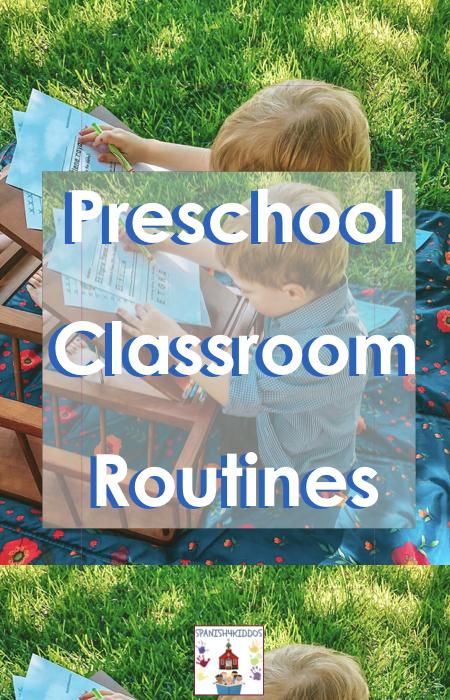
How do preschool classroom routines run in the mornings for you? For the most part, classroom morning routines are prone to disorganization and lack of structure.
Especially when children arrive in the classroom at different times in the morning, most kids tend to put away their backpacks, lunches, and settle down. Of course, you have to wait until the bell rings and start the day. What are the typical teaching strategies that can help you spark bilingual learning in the classroom?
Starting Classroom Morning Meetings On the Right Path
Perhaps, you have a handful of students that arrive early before the bell rings. First of all, greeting students at the door is always a welcoming and warm approach.
You want to begin to build a rapport with students, regardless of age, even at the beginning of the school year. What better way to start than greetings at the door?
However, don't forget to say goodbye at the end of the day as well. Students that arrive early or stay late need the motivation to begin the day. That is, do you have puzzles or interactive activities to start the morning?
- Creating a space in the classroom for those moments is ideal.
- So, take the time to set up a small table or desk with puzzles, learning worksheets, and interactive activities.
- These tasks, usually need to be short, simple and accomplish one educational goal.
- For instance, if you want to focus on Spanish writing practice, develop those skills by having readily available printables.
- You can easily use laminated worksheets, sheet protectors, or dry-erase sleeves.
- Then, reuse these worksheets as many times as needed.
In that way, children don't get bored and challenge themselves to learn a new letter, number, or sentence.
Preschool Classroom Morning Routines Ideas
Those first few minutes after the bell rings and everyone settles into their seats are precious. Within that time, you show classroom rules or expectations.
By having a clear anchor chart or poster, you can easily refer back to those classroom rules. Like in any classroom, children need consistent expectations.
When you develop that introduction from the very first day of school, you set the fundamental ground rules. More importantly, you focus on safety in the classroom, a positive learning environment, and respect to one another.
Setting those preschool classroom routines is not an easy task. Give yourself a breather and acknowledge that teaching preschoolers the guidelines will be challenging. However, the reward will be invaluable.
Once you address foundational routines in your classroom, begin to transition students to different areas. Will you use a circle time or reading station? Using clear transitions to redirect students require patience, dedication, and consistency.
As mentioned before, you're not a miracle worker. Working on station changes will take time. So, work on one aspect at a time. Then, include students to recognize those signals for transitions. For example, you could use a chime, bell, or rhyme. Of course, begin to develop those skills in that first week of school.
Parental Involvement for Bilingual Learning
Preschool classroom routines, like the name suggests, occur when you repeat those steps consistently. You can also have parents help with those routines at home.
For example, parents like Anna, from Pretty As a Peach, encourages her preschool son to develop bilingual learning skills at home. She uses a simple set up in her refreshing backyard to motivate her son to practice Spanish writing.
What's not to like when parents like her focus on strengthening those bilingual language skills! Anna also shared her bilingual journey as a parent on her Instagram, along with her son.
In that way, her preschooler engaged with the Spanish writing practice to use his knowledge of Spanish letters and words. Parental engagement, like Anna's involvement in her son's education, will foster his language development skills at school.
This type of home reinforcement is what teachers love to see. A dedication like Anna and her son to nourish a love for Spanish reading and writing.

